Interview: Santana’s Michael Shrieve on Playing Woodstock at 20
by Jim Sullivan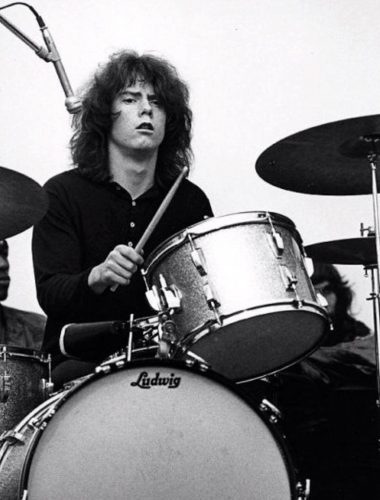 Michael Shrieve had a moment, one of those “big star” moments, when he was just 20 years old. It was a moment—well, nine-and-a-half minutes, actually—that resonated as it happened, made a huge impact the following year, and has continued to have repercussions for decades.
Michael Shrieve had a moment, one of those “big star” moments, when he was just 20 years old. It was a moment—well, nine-and-a-half minutes, actually—that resonated as it happened, made a huge impact the following year, and has continued to have repercussions for decades.
Shrieve was Santana’s drummer, playing alongside percussionists Michael Carabello and Jose Chepito Areas, and the gig was a 45-minute, midday set at the Woodstock Music & Art Fair in August 1969. He was the second-youngest musician on stage during the entire three-day run.
It was guitarist Carlos Santana’s band, certainly. But when documentary director Michael Wadleigh cut the film, what he chose to highlight from Santana was very much the group’s percussionists, featuring their extended jam during “Soul Sacrifice.” Movie audiences in their seats were whipped into the same kind of Latin-rock frenzy that had stunned the standing, sweating crowd at the festival.
“The experience was something that was irreplaceable,” says Shrieve, on the phone from his Seattle home, in our interview from September 2016. “It was a milestone. When we got there—aside from hearing that the highway was closed, aside from flying in in that helicopter and seeing that amount of people—the experience of doing it was actually somewhat surreal because nobody knew us at all. We didn’t even have a record out.”
Watch Shrieve’s Woodstock drum solo, beginning at around the 3:05 mark
And it wasn’t like Shrieve was a master of Latin rhythm. “I had a book that I did some practicing out of, a very basic Latin rhythm book by a man named Ted Reed,” he says. “But I had no experience whatsoever and you can hear it in the music, because I play so inauthentically. I just tried to fit in with them in a way that felt good. Even when we do Latin rhythms, I’m always swinging like a jazz drummer on the cymbals. So, it’s different than a Latin player and in retrospect it’s what created the sound of our rhythm section. It was a combination of elements that had its own feeling.”
Santana’s eponymous debut was recorded in May of ’69 and did not hit record racks until that August. “That was really something that we got over like that,” Shrieve says, sounding still somewhat amazed. “I can only figure that it was sort of a tribal element in the music and the tribal feel of the audience, but we really connected. It was really an incredible experience and then when the film came out [in March 1970] that was a whole other dimension: First of all, seeing ourselves like that in a theater—we hadn’t seen any rough cuts or anything so seeing it was really amazing And then, of course, the way that has imprinted in people’s hearts and minds and stayed that way over all this time is amazing.”
Beyond “Soul Sacrifice,” the AM and progressive FM classic rock radio hits—“Jingo,” “Evil Ways,” “Black Magic Woman,” “Oye Coma Va”—kept coming, making Santana one of the major rock bands of the era.
The downside to Woodstock, the movie?
“For the longest time, for many years, I just kept trying to tell people about what I was doing aside from Woodstock,” says Shrieve. “Because it was so impactful, so many people asked about it. That was my lot in life. It was like being Shirley Temple or something. I was always like, ‘Have you heard my latest record?’
“At a certain point, I think I was around 35 years old, I said [to myself], ‘You know what, just shut up and be grateful. You’ve done something that means so much to so many. Just keep doing what you do, and change your attitude and just have gratitude.”
Related: What became of the Woodstock performers?
Shrieve stayed with Santana through 1974, playing on five albums. Shrieve talked about the toll the rock ’n’ roll lifestyle, the drugs specifically, took. Looking back, he says, “I can see certain periods and I can just see it on the faces of everybody. It’s terrible. But we’re alive and we’re kicking and thriving and we’re grateful for that.”
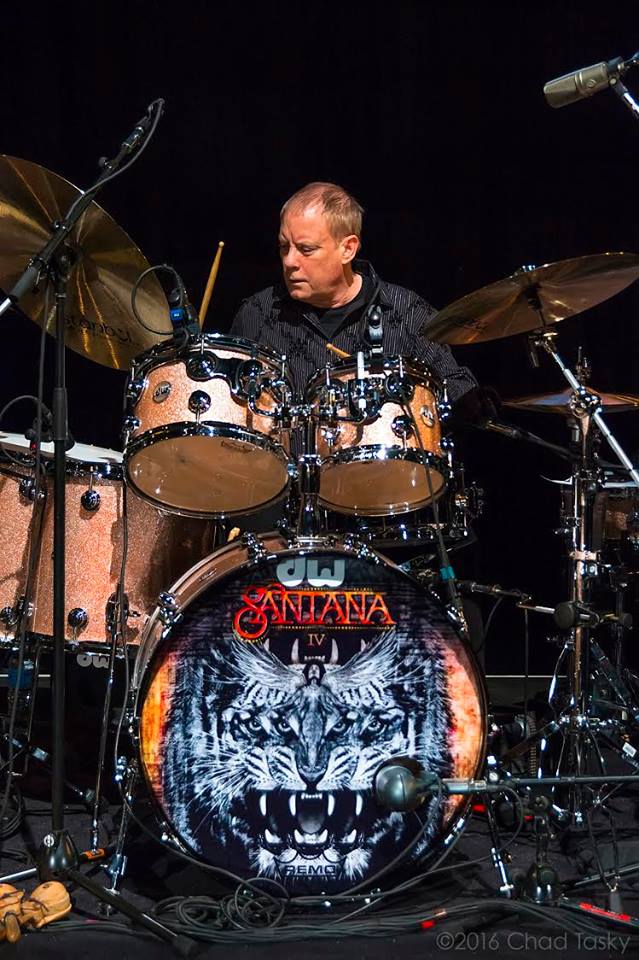
Michael Shrieve with Santana IV in 2016. (Photo: Chad Tasky, courtesy of Michael Shrieve)
Shrieve was active after he left Santana in the mid-’70s, with the bands Automatic Man and Go, the latter a prog-rock/jazz supergroup with Steve Winwood, Stomu Yamashta, Tangerine Dream’s Klaus Schulze and Return to Forever’s Al Di Meola. Shrieve also played percussion on the Rolling Stones’ Emotional Rescue album.
If you’re a new Best Classic Bands reader, we’d be grateful if you would Like our Facebook page and/or bookmark our Home page.
Carlos Santana, of course, went on to much success under his own name, using both his full name and the “Santana” name at times for billings. The group was inducted into the Rock and Roll Hall of Fame in 1998, and reunited for that occasion. The following year, Carlos Santana’s Supernatural album, with its many collaborators—including Eric Clapton, Dave Matthews and Rob Thomas, who sang the hit “Smooth”—sold millions of copies, and that success spiraled into the early aughts.
In 2013 Carlos reconnected with the guys in the “classic” lineup—Shrieve, singer-guitarist Neal Schon (who joined in 1971), singer/keyboardist Gregg Rolie (both Journey men) and percussionist Carabello. (Timbales player Areas wasn’t invited; Benny Rietveld joined on bass and Karl Perazzo on percussion.) The reunited group recorded Santana IV, released in April 2016.
Related: BCB’s review of Santana IV
Life—and playing music—is different from when you’re just barely out of your teens and when you’re in your seventh decade. “I’m 67 now,” Shrieve told us in 2016, “so what was also interesting was preparing for these shows. Going over music that you played when you were 20 years old and playing at this age, with this band, there’s a physicality to it that is a whole other story. That’s one real obvious situation that demanded quite a bit of attention because even if you’re playing [regularly], it’s different when you’re playing Santana music. It’s pretty intense and it’s loud. Those guys are loud now!”
To get in prime shape, Shrieve – born on July 6, 1949, says, “I literally went to physical therapy three times a week for five weeks, working on stuff with my forearms, juicing and going to the gym, going to the [rehearsal] set with the heater on, like hot yoga. Of course, mentally, yes, we’re all different, but we have an understanding that what we experienced as young men, what we created as young men, means a lot to each one of us, individually, so we bring that gratitude with us to the table when we get together, that acknowledgement and recognition. We don’t argue as much. We all put our best foot forward and try to make the music as strong as possible.”
“For some years there had been talk of this going on,” Shrieve says, of a potential reunion, “and it finally happened a couple of years ago, when we finally got in a room together and played. We’d all been in touch, but to go and play, that was a different thing. It was without congas and bass—it was just Gregg Rolie and Carabello and Carlos and myself. It was just to see if that initial chemistry was still there.
“The amazing thing was how much it was there, that there really is such a thing as chemistry and what we do together has a force of its own. And then, the creative process was pretty fast as well. We had a lot of extra stuff. Even though it was drawn out, everything went pretty quickly. I think the record sounds great and we have a DVD coming out of a show that we did in Las Vegas.”
“We rehearsed one night and then we played at House of Blues [in Las Vegas]. And we did three gigs on the East Coast and they were all good too. The only disappointment with those performances was that we didn’t take it on the road over the summer.”

The Santana IV lineup (L-R): Gregg Rolie, Michael Carabello, Carlos Santana, Neal Schon, Michael Shrieve
So will “Santana IV” hit the road again?
“There are no plans,” says Shrieve, “not that I know of. It’s up to Carlos. There was supposed to be some gigs with Journey and there was one two days ago at the Forum in L.A. and there was a big one at [San Francisco’s] AT&T Park and we were supposed to be on that but Carlos just opted to go with his regular band. I don’t know what the reason is and there hasn’t been much communication.”
It baffles Shrieve. The album went Top 10, the dates they did play went well. And, let’s face it, even best-selling records barely sell a fraction of what they used to and musicians make their money touring.
“The record’s done fairly well,” says Shrieve. “I can’t hide the fact that I’m disappointed that we didn’t go out.”
Shrieve isn’t sure if the door is open or closed on Santana IV. “The thing is, I don’t know and it’s a little bit odd, I must say. There was a big buildup and it was a good experience playing with the guys again at Madison Square Garden and the other dates and then … nothing. I don’t know quite what to equate it with, but it was like a big buildup and then it was gone.”
It’s not that Shrieve is sitting around waiting for the call. Currently, he plays with a five-piece group in Seattle, Michael Shrieve’s Spellbinder, including Hammond B-3 organist Joe Doria, guitarist Danny Godinez, bassist Farko Dosumov and trumpeter Raymond Larsen. They have two albums, the first Michael Shrieve’s Spellbinder Live at Tost and the second, just Michael Shrieve’s Spellbinder.
“The music is different and I bring another sensibility to it than I do to Santana,” says Shrieve. “You have to find the center within yourself. The essence of myself is still there but it’s grown in ways of wisdom and I approach it that way. I sit down to the drums in a way I have musical control over. It’s more like floating down a river, much more of a Zen approach I take to the whole thing. It’s instrumental music. It’s not ‘out there’ and it’s not esoteric.
Watch Michael Shrieve’s Spellbinder performing live
“I’ve got another record called Drums of Compassion where I’m standing up playing 16 toms in a semi-circle. It’s almost like a mediation record, but it’s also got some great Jack DeJohnette and Airto on it and I do a piece with Amon Tobin and Trey Gunz so I’m excited about that as well.”
Those early Santana albums are available here. Shrieve’s solo albums are here.
- ‘Dylan Goes Electric!’ Book Author Talks Newport 1965 - 01/02/2025
- Producer Jack Douglas on John Lennon, Cheap Trick - 11/06/2024
- 10 Classic Punk Rock Songs - 10/15/2024

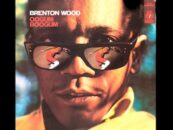
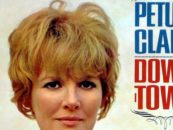
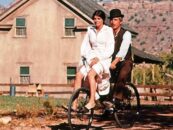
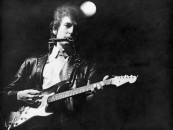

11 Comments so far
Jump into a conversationGreat article, and obviously, phenomenal performance. One small quibble: Shrieve was NOT the youngest musician on stage during the entire three-day run – it was Henry Gross of Sha Na Na.
He says that, but even that may be wrong as CSN+Y’s Greg Reeves had a fake Id and may have been only 15 or even 14, as his bio says born in (march?) 1955!!!
Thank you, I was going to say the same thing. I’ve been a Henry Gross fan for years, he never gets his due. Even Wikipedia has it wrong.
Referencing the Woodstock gig with, “It was guitarist Carlos Santana’s band, certainly…..” NOT. His last name on the name of the group was merely a technical filing decision forced on the members, too young to know the historical significance it would have for years to come. But it was not “his” band in any shape or form similar to today. It was all by committee at that time, no one band member calling the shots. This obviously changed over time, the transition from III to Caravanserai particularly, but albums 1 – 3 were BAND projects.
And you know more about this than Michael Shrieve? Well I guess he’s lying then.
Watched/heard Santana at Tanglewood 1970
WOW!
Great article. I saw them when they were going by Santana’s Blues Band back in 1969 at the Sound Factory in Sacramento, CA. Unbelievably good.
Thank you so much for the article. I agree, Michael Shrieve is so underrated but then so many artists are.
Woodstock film and record, was the key of success for not only Santana, but also to Ten Years After, Jimi Hendrix and The Who. After the film and record, some bands went to sell millions of records all over the world. The ones that produced the concert, the film and records, should be at the Hall of Fame. They pushed relatively unknown bands and artists to the top.
Love, Love, Love, Michael Shrieve!! His newer stuff sounds pretty good too!
Regarding Luis’ post about the producers. I would suggest reading the book “Barefoot In Babylon” for the behind the scenes wheeling and dealing that created the event.
I saw Santana at the old RI Auditorium in 1970. I was 17 and they blew me away. The energy on the stage was insane. They brought the house down.